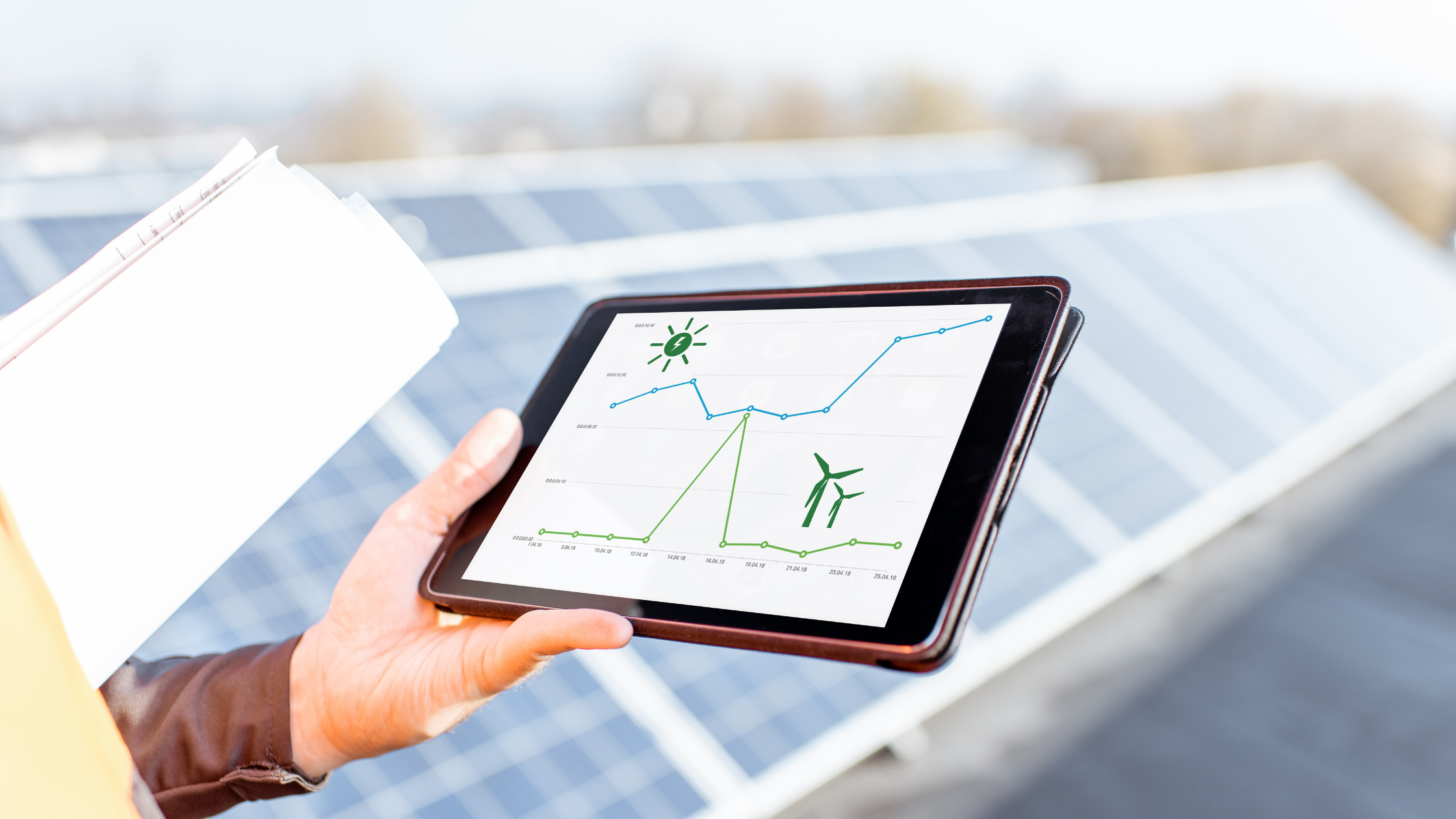How much energy am I saving or wasting? How much more can I save on energy costs? Why is the AC kicking on at 3 am every weekday and how can I fix that? If you are a building owner or operator these are questions that no doubt plague you.
In our blog about energy modeling, we explore the predictive nature of modeling and the importance of good design in HVAC systems. Here, we will talk about the importance of monitoring the ongoing use of those systems. By utilizing energy monitoring equipment, you can see in real-time how those systems are performing, and get clear answers to these questions that may keep you up at night...or at least working overtime.
What is energy monitoring
Energy monitoring tracks and records consumption patterns in building(s) via an energy monitoring system (EMS). An energy monitoring system is equipment and software that integrates with your building’s utility provider(s), gathers consumption data, analyzes it, and then provides useful information directly to your desktop, laptop, and mobile devices. Information such as real-time alerts, how much energy the building is using, and how it is used throughout the day. Energy monitoring delivers enhanced control and efficiency, meter by meter.
Connecting energy monitoring in buildings
Connecting an EMS is fairly straight forward. The data is gathered by connecting the energy monitoring equipment to meters or sub-meters on-site for each resource you chose to monitor (electricity, water, gas, solar, energy storage). The best systems offer flexibility to connect and are hardware agnostic, assuring ease of adoption with what you already have in place, and adaptation to future changes and upgrades you may make.
There is a wide variety of energy monitoring systems on the market. Green EconoME works with Energy360Ⓡ by Intech Energy, a cloud-based energy monitoring system that uses next-generation sensors and wireless building controls, providing real-time monitoring and remote equipment management. The advanced technology of the Energy360 system makes it easy to install and less invasive as earlier equipment. The advantage of being cloud-based is not only mobility, but advanced data analytics. The ability to capture and store, read, and analyze your big data empowers you to make changes toward significant savings.
So now that you have your EMS equipment connected, the fun can begin! As the end-user, you have a host of robust functions and controls at your fingertips. EMS remote access dashboards deliver analytics that can be viewed as granularly or high level as desired. Three key features include:
Real-Time Monitoring - Receive notifications to uncover problems and anomalies. Visualize your consumption with detailed comparisons, graphs, charts, and maps.
Control Strategies & Automation - Set up and control your equipment remotely. Manage whole building and zone/meter schedules to optimize occupant comfort and demand.
Energy Forecasting - Customize reports to identify energy savings, building performance, and forecast future efficiency or RCx projects.
Why monitoring your energy use is important
There are a multitude of positive reasons to monitor the energy and/or water used in your building. Let me put it this way, it is way more enjoyable to view your utility bills and be surprised by how much you are saving, versus how much you are spending. Think of all the ways you benefit from identifying a problem early, rather than after you have overused and overspent. Below is a list of the benefits we can think of. I bet you will find even more when you consider your specific needs and application. If you do, please call us!
Lower Energy/Water Costs - Save on HVAC, lighting, water use, and expense. This is usually the heart of any efficiency strategy. Energy monitoring allows you to see actual efficacy and identify areas of improvement, thereby informing further strategies.
Improve Tenant Comfort - Fix heating and cooling complaints. This will not only lead to happier, healthier occupants but also happier, healthier operators.
Increase Facility Value - Higher Net Operating Income. “Smart buildings” show on average, 13% savings. When operating costs are several hundred thousand dollars, this is a significant amount back into your NOI.
Reduce Equipment Maintenance - Optimize operation and life cycle of systems. The effects of this can go beyond general maintenance to identifying the cause of a serious malfunction, mitigating emergency situations.
Peak kW Management - Lower utility charges by managing and responding to peak kW demand. Peak shaving is a proven and growing strategy to reduce TOU charges and avoid overuse during peak hours.
Energy monitoring in action
Green EconoME utilizes energy monitoring as a powerful tool in identifying and measuring client energy and water use. We have implemented our solution into a variety of multi-faceted retrofit projects and each has realized significant savings throughout. Combining energy monitoring with a suite of efficiency measures, Warner View Center, which was an LABBC 2020 Innovation Awards, Energy Efficiency Project of the Year Nominee, reduced electricity and gas usage by over 50%, translating into savings of nearly $1 per SqFt., and projected savings of over $100,000 annually in operating expenses. Although that is comprehensive of multiple efficiency measures, Energy360 EMS is the nerve center and is being used by Green EconoME and the building management to this day, to track and monitor use. It acts as insurance and preserves the value of the investments.
New efficiency products and technologies emerge at a rapid pace. Energy monitoring has been used widely and continues to stand the test of time. Now more than ever, efficiency and sustainability planning are critical. Demand is going up due to the effects of the COVID-19 pandemic, in many cases taking reduction efforts in the wrong direction. You can listen to an enlightening conversation with our CEO, Marika Erdely, and our partners at Intech Energy about how you can use energy monitoring as an integral part of your efficiency plan and operations. Please contact us to learn more, schedule a demo, or to receive a free quote.




